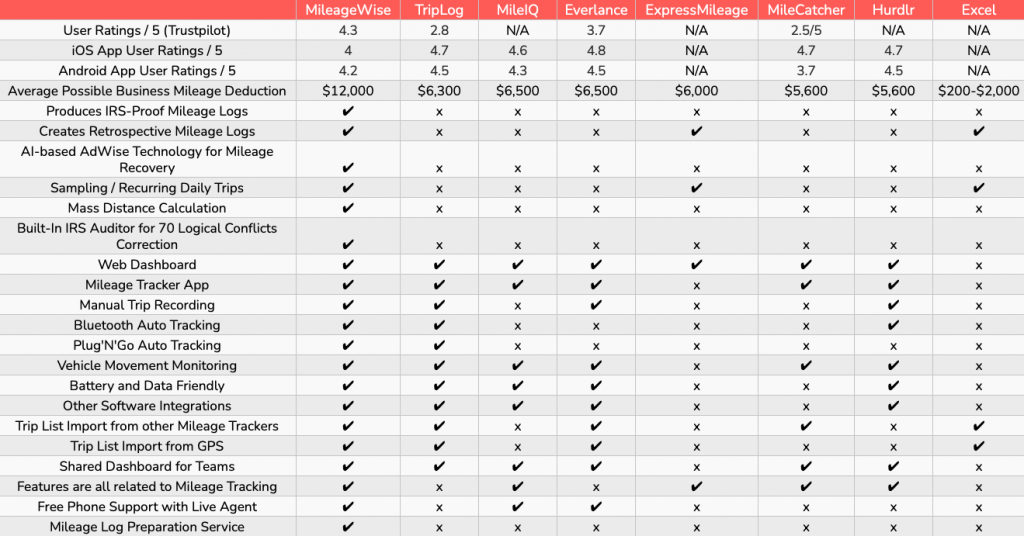You are using your current Vehicle Mileage Logging method for a good reason. Obviously, you are 100% satisfied with the amount of money you can claim with it in your Business Tax deduction, the time you spend on it, and the app itself (if you use an app). Well, if not, don’t worry, we might give you a good idea or two. But let’s start at the beginning.
ARE MILEAGE LOG TEMPLATES EFFECTIVE?
There is a wide range of how people that are running businesses track their miles for Business Tax Deduction or Mileage Reimbursement. It starts in the stone age with people using a pen & paper to track their miles manually on a mileage tracker form, sacrificing long hours to create them.
Then came another chapter in time, and having an Excel Mileage Log Template on your computer was the best option until about 15 years ago. Surprisingly, there are still some people who have enough time and energy to use this method, but I respect that and wish them good luck with it.
There are tons of Mileage Log Templates and forms for Google Sheets online, but you still need to spend a nice bit of your time filling them, and at the end of the month, there’s no proof that they are 100% IRS-compliant. Speaking of which, let’s see what IRS requires for mileage logs.
IRS MILEAGE LOG REQUIREMENTS:
- The first and the Last Odometer readings of the year
- Total Mileage for the given Tax Year (Business use & Personal use)
- Purpose of Trips
- Dates of trips
- Destination of Trips
If you are looking to track all of the items above on a printable mileage log or a mileage tracker form, there’s a good chance that it will be difficult and time-consuming, while running your business effectively.
Nowadays, we live in a time where Mileage Logging Software seems to be the quickest and easiest way.
Having a Mileage Tracker App for both iOS and Android phones that automatically tracks your business miles, accompanied with a Web Dashboard desktop platform, where you can manage your trips and print your Mileage Log for Taxes at the end of the month, is the best option for those who want to save time and money.
It’s also important to know that the IRS has increased the rate of Standard Mileage Deduction to 58.5 cents per mile, so there’s an opportunity in that to balance out the increasing gas prices a little bit. If you’d like to maximize your Tax Deduction for Business Miles, you have to know how to keep track of mileage for taxes.
Naturally, people have different habits and needs, so we have brought you an awesome comparison table with the most used methods there are for tracking business miles. Find the best way to make a mileage log for taxes, see for yourself what features each one has:

If you take a look at the possible deductible amount, it sort of speaks for itself. Facts are stubborn things, aren’t they?
MileageWise seems to be a good choice when looking to get the most out of Tax Deduction for Business Miles. The biggest names have an advantage ahead of the new players in the league, but hey, we have seen underdogs working their way up to the Super Bowl before, haven’t we?
EXPENSE TRACKER OR MILEAGE TRACKER?
As you can see in the table, most of the biggest Mileage Trackers are expense trackers as well, which means they are not focusing entirely on mileage logging. Also, some of them are operating literally without customer service – you can check their websites to see that. Customer service is a must these days, we need to entrust companies that they will be there for us.
Save this link for later, in case you are in need of a professional Mileage Logging Software, with which you can save $12,000 a year for each vehicle you have.




























